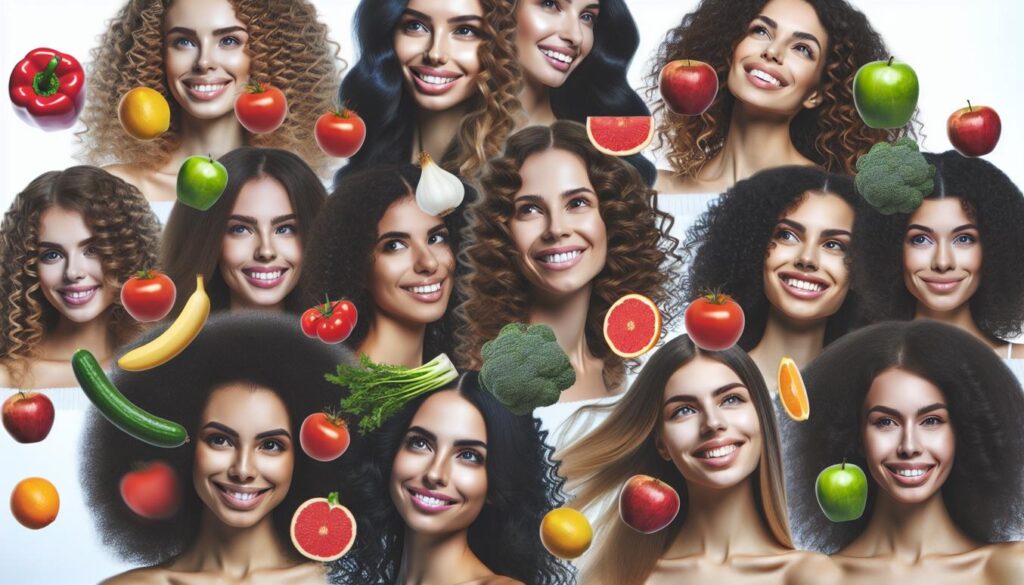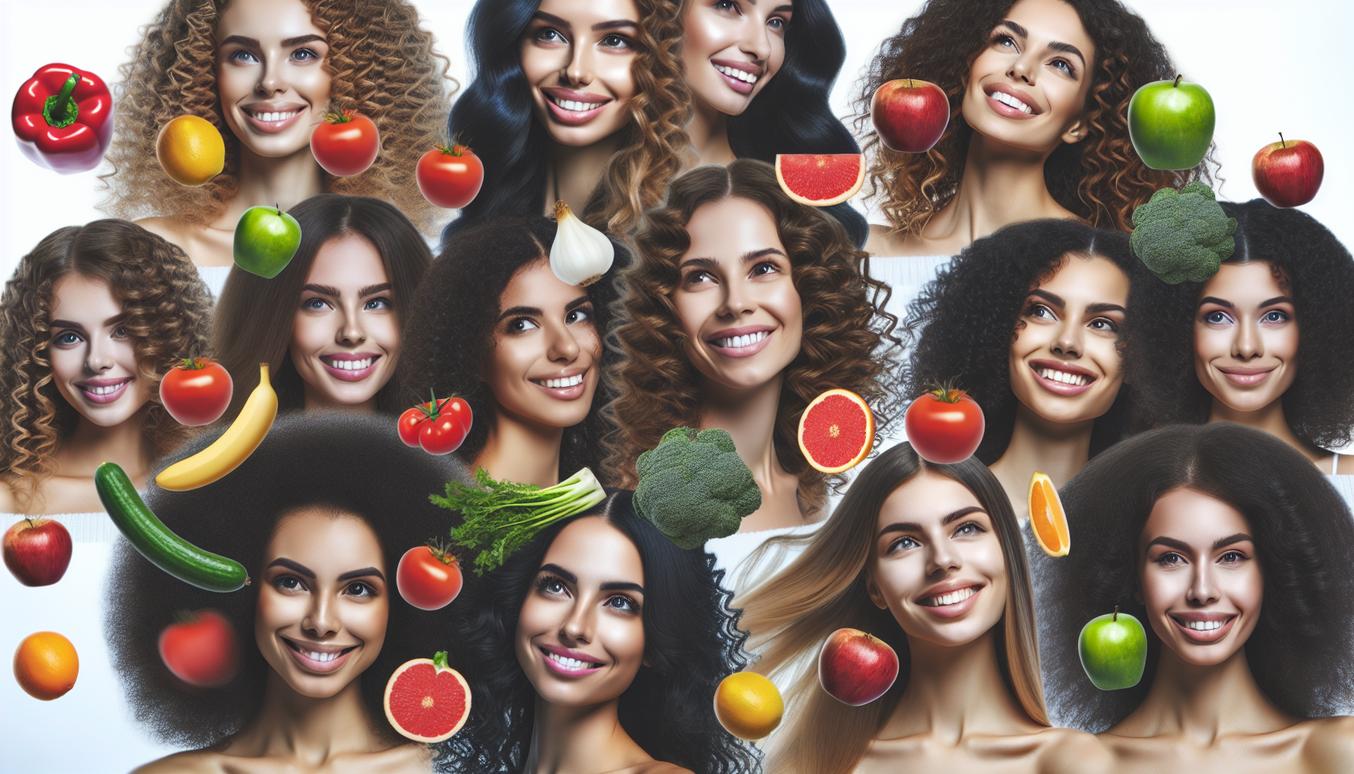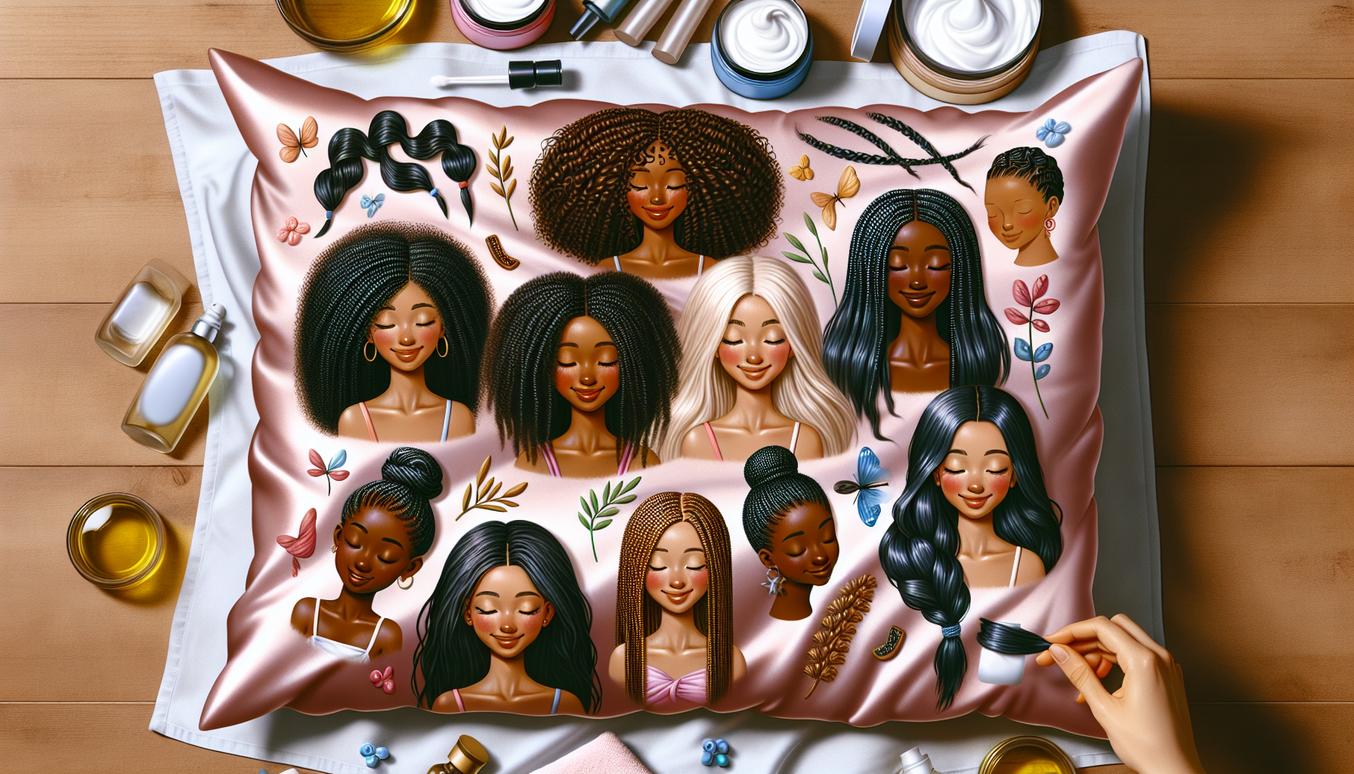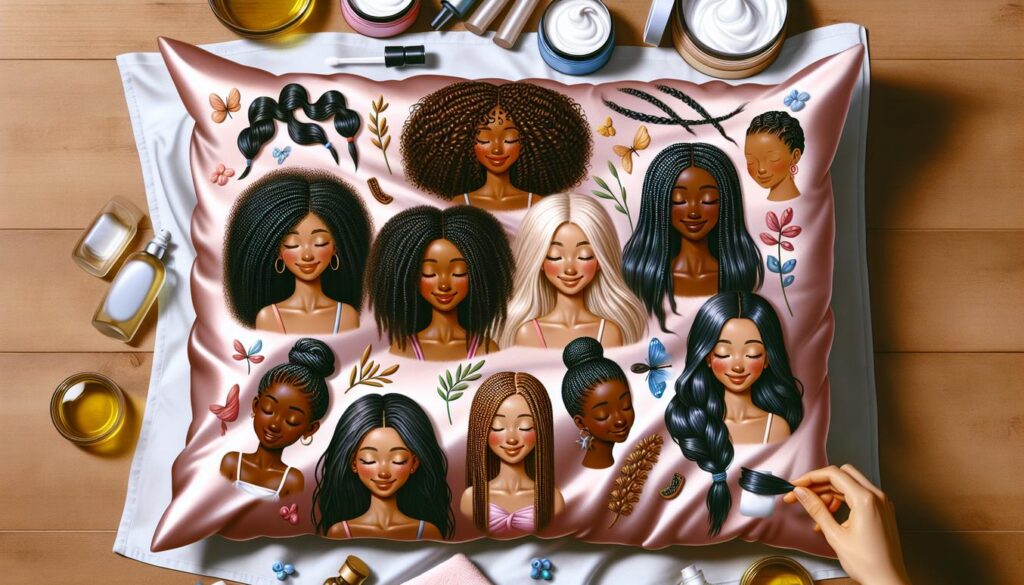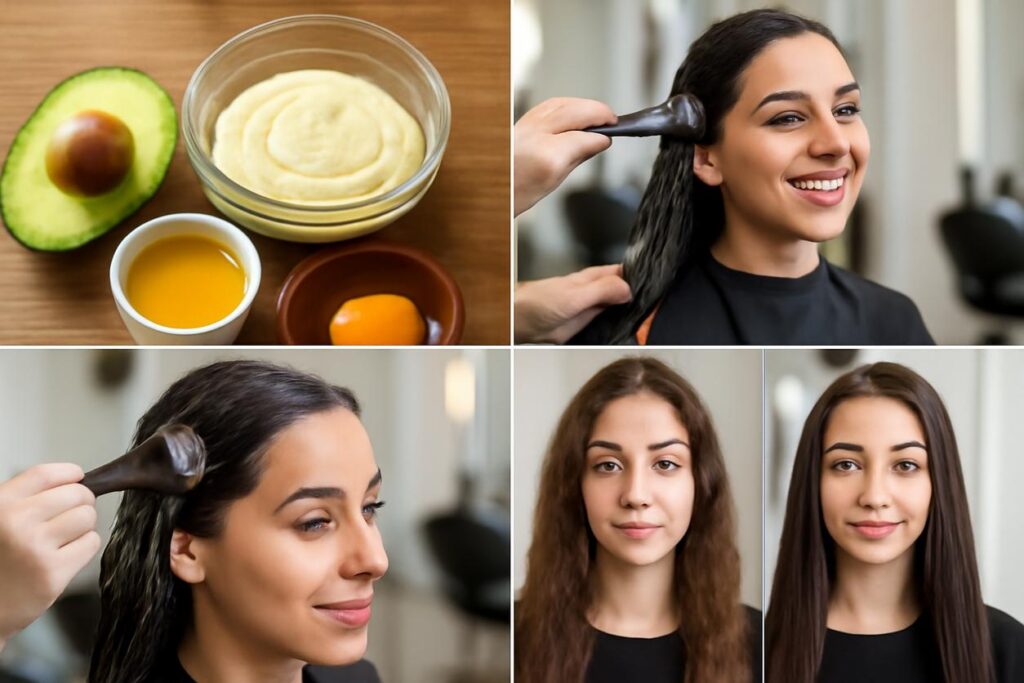Table of Contents
- Why Curly Hair Needs a Tailored Nutritional Approach
- Essential Nutrients for Curl Structure and Shine
- Everyday Whole Foods to Prioritize for Healthier Curls
- Supplements: A Closer Look for Curl Health
- Hydration and Electrolytes: The Unsung Heroes of Curl Definition
- Meal Timing and Habits That Support Hair Growth
- Easy Recipes and Snack Ideas for Curl Nourishment
- Sample One-Week Meal Plan for Optimal Curl Health
- Connecting Your Diet to Your Topical Curl Care Routine
- Common Myths About Diet and Curly Hair Debunked
- How to Track Improvements and When to Consult a Clinician
Why Curly Hair Needs a Tailored Nutritional Approach
If you have curly hair, you already know it has a mind of its own. Those beautiful bends, coils, and kinks are the result of an elliptical hair follicle shape, which causes the hair to grow at an angle. This unique structure also means the cuticle layers on the outside of the hair strand don’t lie as flat as they do on straight hair. This makes it harder for natural oils from your scalp (sebum) to travel down the hair shaft, leaving your ends prone to dryness, frizz, and breakage.
While topical products like deep conditioners and leave-ins are essential, they are only part of the solution. True, lasting curl health starts from within. This is where curly hair nutrition comes in. By providing your body with the right building blocks, you can construct stronger, more resilient, and shinier hair from the follicle up. Think of it as building a house: you need a solid foundation before you can start decorating. A targeted diet provides that foundation for your curls.
Essential Nutrients for Curl Structure and Shine
Your hair follicles are tiny but mighty factories that are constantly working. To produce healthy hair, they need a consistent supply of specific vitamins and minerals. For a broad scientific overview, you can explore the connection between nutrition and hair in various studies. Here are the non-negotiable nutrients for optimal curl health.
Protein: The Building Block of Curls
Hair is made up of approximately 95% protein, primarily a fibrous protein called keratin. Insufficient protein in your diet can lead to hair that is weak, brittle, and slow-growing. Ensuring you consume adequate protein provides the essential amino acids needed to build strong keratin structures, which form the very core of each curl.
Iron: The Oxygen Carrier
Iron is critical for producing hemoglobin, a protein in your red blood cells that carries oxygen to all your body’s cells, including your hair follicles. When your body is low on iron, it prioritizes oxygen for essential life functions, and your hair follicles can suffer. This condition, known as iron deficiency, is a well-documented cause of hair shedding, as highlighted in studies on iron and hair health.
Zinc: The Growth and Repair Mineral
Zinc plays a vital role in hair tissue growth and repair. It also helps keep the oil glands around the follicles working correctly. A deficiency in zinc can lead to a dry, flaky scalp and hair loss. This mineral is a key player in the hair growth cycle, ensuring follicles can move through their phases efficiently.
Biotin: The Famous B Vitamin
Biotin, or Vitamin B7, is perhaps the most well-known “hair vitamin.” It assists in the production of keratin, our hair’s main protein. While a true biotin deficiency is rare, ensuring you have enough in your diet supports the fundamental processes of hair production and contributes to a healthy scalp.
Omega-3 Fatty Acids: The Natural Moisturizer
These healthy fats are crucial for overall health, and your hair is no exception. Omega-3s nourish hair follicles, support scalp health by reducing inflammation, and can increase the natural shine and luster of your curls. They help lubricate the hair shaft from the inside, combating the natural dryness of curly hair.
Everyday Whole Foods to Prioritize for Healthier Curls
The best strategy for excellent curly hair nutrition is a food-first approach. Focus on incorporating a variety of nutrient-dense whole foods into your daily meals.
- Protein: Lean meats (chicken, turkey), fatty fish (salmon), eggs, Greek yogurt, lentils, chickpeas, and tofu.
- Iron: Lean red meat (in moderation), spinach, kale, lentils, beans, and fortified cereals. To enhance absorption, pair iron-rich foods with a source of Vitamin C.
- Zinc: Oysters, beef, pumpkin seeds, lentils, chickpeas, and cashews.
- Biotin: Eggs (with the yolk), salmon, avocados, nuts, seeds, and sweet potatoes.
- Omega-3s: Salmon, mackerel, sardines, chia seeds, flaxseeds, and walnuts.
- Vitamin C: Bell peppers, strawberries, citrus fruits, and broccoli. Vitamin C is also an antioxidant that protects hair follicles from damage.
- Silica: Bananas, oats, and leafy greens. Silica helps support collagen production and hair strength.
Supplements: A Closer Look for Curl Health
The supplement aisle can be overwhelming, with countless products promising miraculous hair growth. However, it is crucial to approach them with a strategic and informed mindset. Supplements should “supplement” a healthy diet, not replace it.
When to Consider a Supplement
A supplement might be beneficial if you have a confirmed nutrient deficiency identified through a blood test, follow a restrictive diet (like veganism, which may lack B12 and iron), or have a medical condition that impacts nutrient absorption. Taking high doses of vitamins you don’t need can be ineffective and sometimes even harmful.
How to Evaluate Supplements in 2025 and Beyond
If you and your doctor decide a supplement is right for you, here are some strategies for choosing a quality product:
- Look for third-party testing: Seals from organizations like USP or NSF indicate that the product contains what it claims on the label and is not contaminated.
- Check dosages: Ensure the dosage aligns with the Recommended Dietary Allowance (RDA) unless your doctor advises otherwise. More is not always better.
- Be skeptical of “proprietary blends”: These blends often hide the exact amount of each ingredient, making it impossible to know if you are getting an effective dose.
- Consult a professional: The most important step is to always talk to a healthcare professional or registered dietitian before starting a new supplement routine. They can help you identify your specific needs and avoid potential interactions.
Hydration and Electrolytes: The Unsung Heroes of Curl Definition
We often focus on hydrating our curls from the outside, but internal hydration is just as important. Dehydration can cause your skin, scalp, and hair to become dry and brittle. When your body is dehydrated, it pulls water from non-essential tissues, and unfortunately, your hair falls into that category.
Beyond Just Water
While drinking enough water is fundamental, maintaining a proper balance of electrolytes—minerals like potassium, sodium, and magnesium—is key to ensuring that water gets inside your cells. These minerals help regulate hydration throughout your body. You can support your electrolyte balance by incorporating foods like bananas, avocados, leafy greens, and coconut water into your diet.
Meal Timing and Habits That Support Hair Growth
How and when you eat can also influence your hair’s health. Your hair follicles require a constant supply of energy and nutrients to thrive.
The Importance of Consistent Fuel
Skipping meals or engaging in very low-calorie diets can signal to your body that it needs to conserve energy. This can shift hair follicles from the growth phase into the resting phase, potentially leading to increased shedding a few months later. Aim for balanced meals and snacks throughout the day to provide a steady stream of nourishment.
Post-Workout Nutrition
Exercise is great for circulation, which benefits your scalp. Following up a workout with a balanced snack or meal containing both protein and carbohydrates helps replenish your energy stores and provides the amino acids needed for muscle repair and, by extension, hair follicle support.
Easy Recipes and Snack Ideas for Curl Nourishment
Good curly hair nutrition doesn’t have to be complicated. Here are some simple ideas to get you started.
Curl-Friendly Breakfasts
- Omega-3 Power Bowl: Greek yogurt topped with a tablespoon of ground flaxseed, a handful of walnuts, and fresh berries.
- Protein-Packed Scramble: Two or three scrambled eggs cooked with a large handful of spinach, served with a side of avocado on whole-wheat toast.
Smart Snacks
- A handful of almonds or pumpkin seeds.
- An apple with a tablespoon of nut butter.
- Hard-boiled eggs for a quick protein boost.
- Hummus served with sliced bell peppers and cucumbers.
Sample One-Week Meal Plan for Optimal Curl Health
This sample plan is designed to be balanced and rich in hair-loving nutrients. Adjust portion sizes based on your individual needs.
| Day | Breakfast | Lunch | Dinner | Snack |
|---|---|---|---|---|
| Monday | Greek yogurt with berries and walnuts | Large spinach salad with grilled chicken, chickpeas, and a lemon-tahini dressing | Baked salmon with roasted sweet potatoes and broccoli | Apple with almond butter |
| Tuesday | Oatmeal with chia seeds and banana | Lentil soup with a side of whole-grain bread | Turkey meatballs with zucchini noodles and marinara sauce | Handful of pumpkin seeds |
| Wednesday | Scrambled eggs with avocado and whole-wheat toast | Leftover turkey meatballs and zucchini noodles | Tofu and vegetable stir-fry with brown rice | Hard-boiled egg |
| Thursday | Smoothie with spinach, banana, protein powder, and flaxseed | Quinoa bowl with black beans, corn, avocado, and bell peppers | Grilled steak (lean cut) with a side salad | Pear and a few cashews |
| Friday | Greek yogurt with berries and walnuts | Tuna salad (made with Greek yogurt) sandwich on whole-grain bread | Homemade chicken and vegetable skewers with a side of couscous | Hummus with carrot sticks |
| Saturday | Whole-grain pancakes with a side of berries | Leftover chicken skewers in a wrap with lettuce and tomato | Bean burritos with brown rice, salsa, and guacamole | Orange |
| Sunday | Oatmeal with chia seeds and banana | Large mixed greens salad with canned salmon, cucumber, and olive oil vinaigrette | Roast chicken with roasted root vegetables (carrots, parsnips) | Small bowl of Greek yogurt |
Connecting Your Diet to Your Topical Curl Care Routine
The ultimate goal is to create a powerful synergy between your internal nutrition and your external hair care routine. They are two sides of the same coin.
The Inside-Out Synergy
When you focus on your curly hair nutrition, you are building stronger, more resilient hair from the inside. This makes your topical products more effective.
- Better Moisture Retention: A diet rich in omega-3 fatty acids and proper hydration helps improve your hair’s natural ability to retain moisture. This means your leave-in conditioners and creams will work better because they are sealing in moisture that is already present.
- Increased Strength: Adequate protein intake builds a strong keratin core. This stronger hair is less susceptible to mechanical damage from styling, detangling, and even sleeping.
- A Healthier Scalp: Nutrients like zinc and omega-3s reduce inflammation and help regulate sebum production, creating a healthier scalp environment that is more conducive to healthy hair growth.
Common Myths About Diet and Curly Hair Debunked
Misinformation about diet and hair is everywhere. Let’s clear up a few common myths.
- Myth: A single “miracle” supplement can fix your hair, regardless of your diet.
- Reality: You cannot out-supplement a poor diet. Supplements are designed to fill specific nutritional gaps, not to serve as a replacement for a balanced intake of whole foods. The foundation of curly hair nutrition is always a healthy diet.
- Myth: Drinking a gallon of water a day will instantly cure your dry curls.
- Reality: While internal hydration is vital for overall health and contributes to hair health, it is a systemic process. It will not magically moisturize your hair shafts overnight. You still need excellent topical products to seal the cuticle and prevent moisture loss.
- Myth: Taking massive doses of biotin is the secret to rapid hair growth.
- Reality: Biotin is important, but it’s just one piece of the puzzle. Unless you are deficient, extra biotin is unlikely to have a dramatic effect. Deficiencies in iron, zinc, or protein will have a far more significant negative impact on your hair than a lack of extra biotin.
How to Track Improvements and When to Consult a Clinician
Patience is a virtue, especially when it comes to hair. Since hair grows about half an inch per month, it can take at least 3 to 6 months to notice significant changes from your dietary improvements.
Signs to Look For
Instead of just measuring length, pay attention to these qualitative changes:
- A noticeable decrease in hair shedding in your brush or in the shower.
- Increased natural shine and elasticity in your curls.
- New, short “baby hairs” appearing along your hairline.
- Strands that feel stronger and are less prone to snapping during detangling.
When to See a Professional
While nutrition is a powerful tool, it cannot solve every hair issue. You should consult a doctor, dermatologist, or registered dietitian if you experience sudden, patchy, or excessive hair loss. These can be signs of underlying medical conditions that need to be addressed. For more information, general guidance on hair loss and its potential causes is available from healthcare authorities. A professional can run blood tests to check for nutritional deficiencies or hormonal imbalances, providing a clear path forward for your health and your curls.

